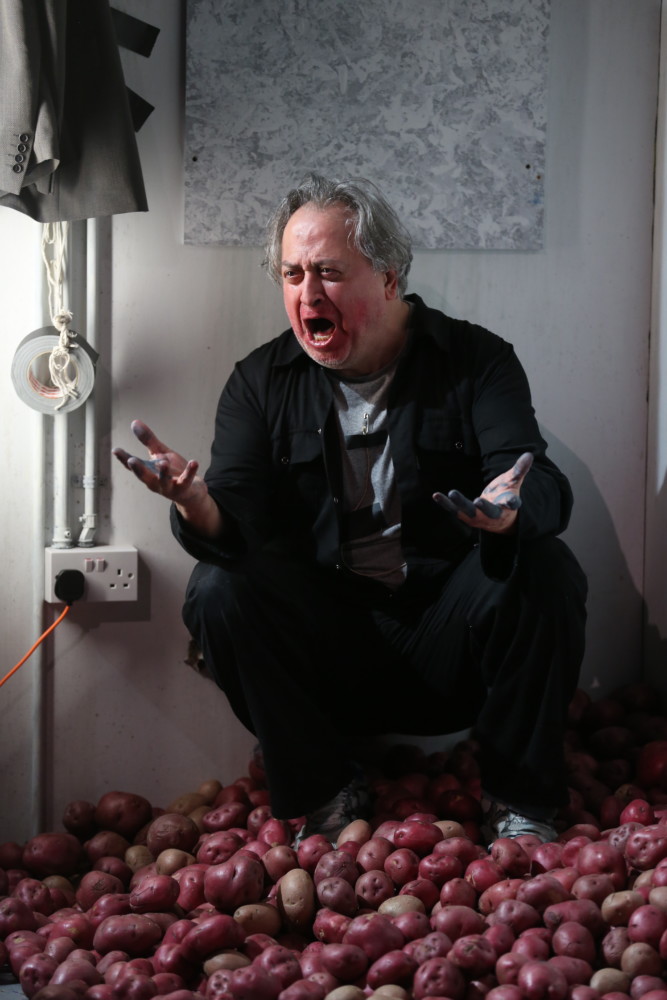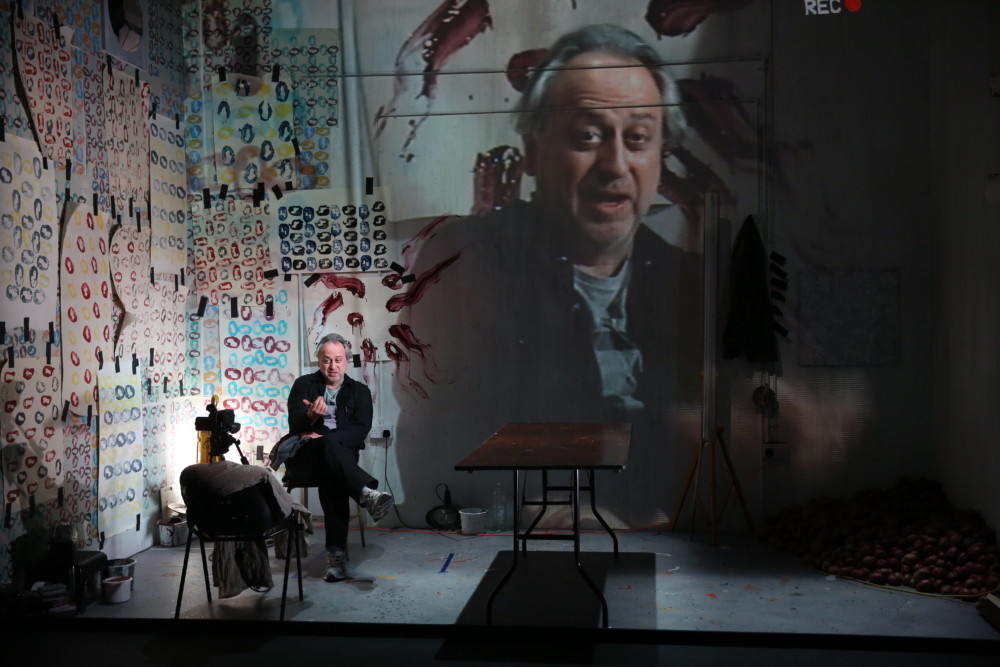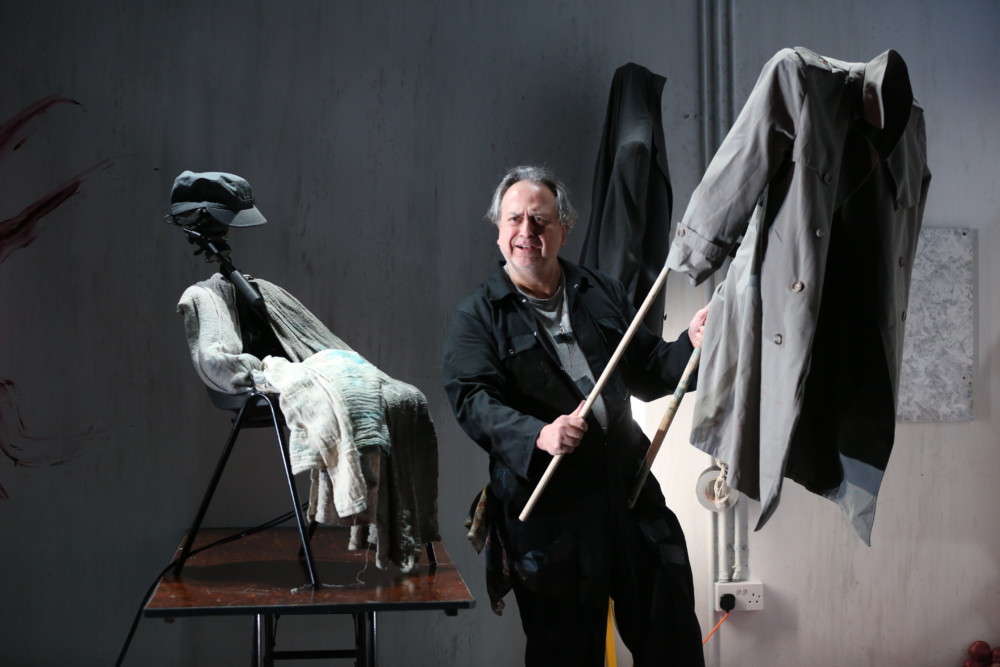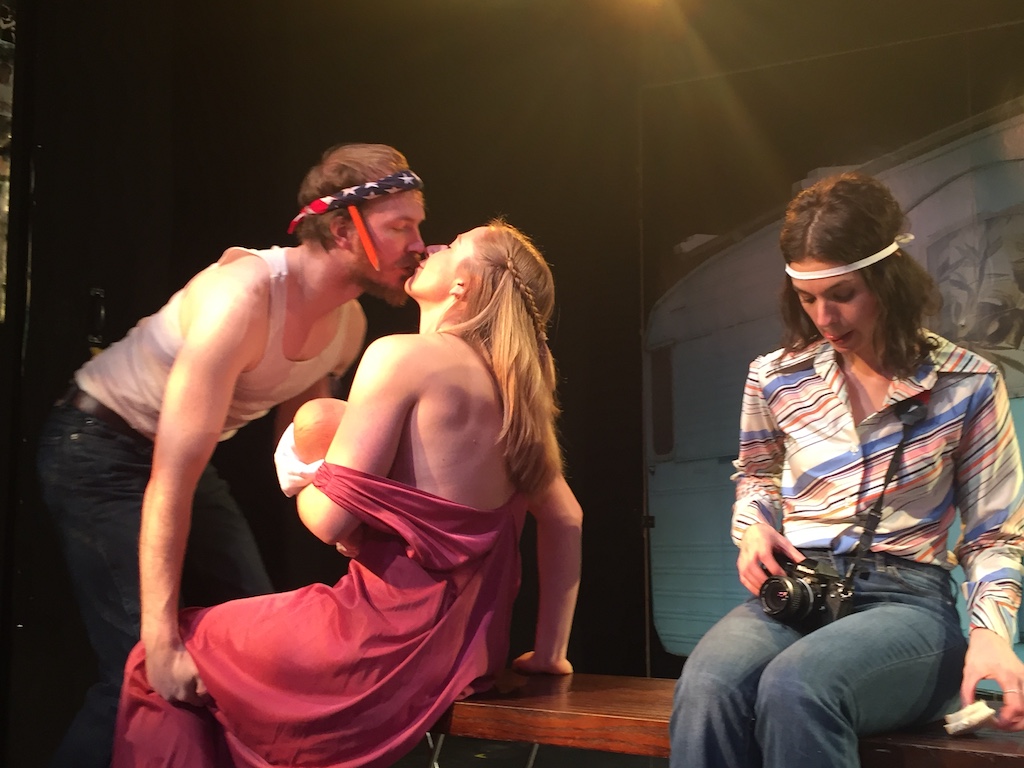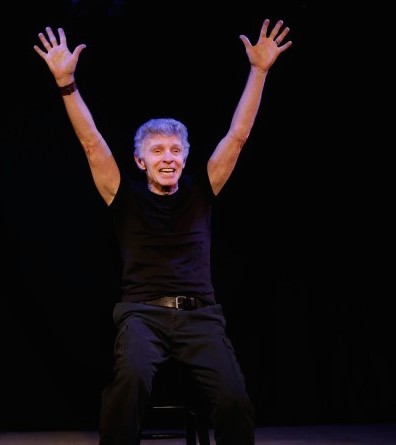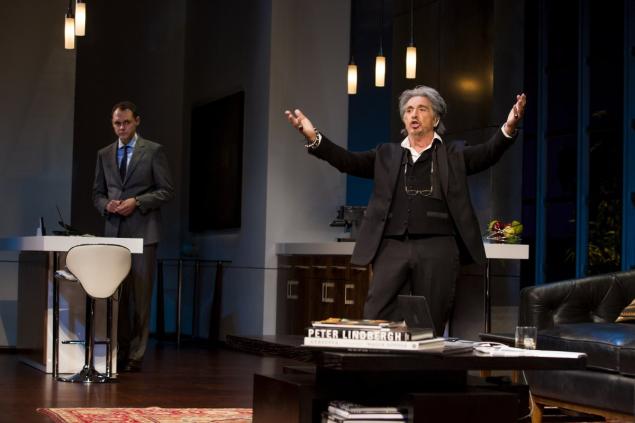by Marcina Zaccaria
At first, we’re not sure if it’s a painter’s or sculptor’s studio. The table is perfectly prepared. Rolls of paper hang from the wall in a tall loft where a video camera catches every movement.
Confessional, anecdotal, an artist’s recitation is a rallying poem. Story after story, he sings a sorrow, a drama of longing. Devout and resolute, performative arts breaks new ground on the sliver of a stage where the Man, played so confidently by Stanley Townsend, continues to paint. Poetic impulses keep him from finding clear reason, however, the joy of the ryhme, the repetition of vowels and consonants provided by Paul Muldoon, creates its own language.
The Man creates windows to be seen on video around the slabs of shape repeated on butcher paper. The artist’s studio is so small. For those who love performance art, there are some key moments, magnified by the work of Video Designer Jack Phelan. Cut potatoes, smeared to look like lips; a blue sphere of paint, dragged across the paper on the long table; black paint, splattered and thrown across the back wall. The Man makes inventive use of figures on ladders, flying them like puppets, creating a counter to speak in time. The figures are ghostlike, reminding us of the lonely and desolate world that he has created in his own mind, after losing a loved one to cancer. A sad clown, crying into a camera, wishing for connection, his video diary includes places he has walked, phrases that occur to him, and words that feel pulled from Waiting for Godot.
Director Sam Yates constructs moments that are frightening at first. The signs of despair are troubling. Red lips, smeared from potato, are a sight to see. Eventually, the Man breaks down. At the end of the show, the stage is a mess, a mess of his distinct making, and the violent throws of paint speak to a kind of empty inner rage, yearning to take shape on a canvas.
Physical outbursts that bring back the joy of the 80s. The sounds of Blondie and the departures to the early video era, look so lively from this older actor. Sound design from Sinéad Diskin ranges from classical to opera to post-modern; music is really a means of keeping the emotion flowing through a desperate act of creation. Stanley Townsend is limber and up to the challenge, and in the dance, loses his sorrow. Almost like soft-shoe, he steps lively across the stage with his paint stirrer, and we wonder what the measure of a man is to him. Shadows create a three-ness on stage. His incantation becomes a dedication.
He knocks down the back wall, sending it crashing to the ground. In opening the space, he creates a type of “afterworld,” where he can softly intone Muldoon’s last passage of the show, asking the audience to join him and celebrate the language of poetry.
Photos: Carol Rosegg
Incantata is a Galway International Arts Festival and Jen Coppinger Production. It was presented at Irish Repertory Theatre, located at 132 W. 22nd Street, and will be playing until March 15.


